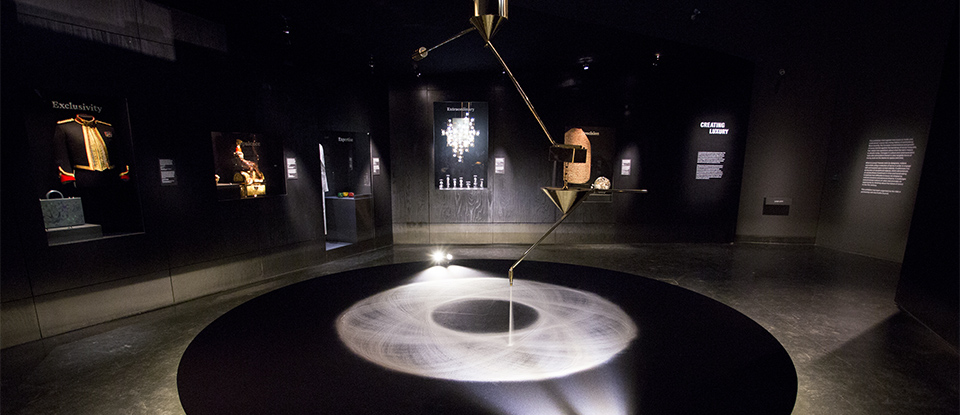Closed Exhibition - What is Luxury?
What is Luxury? - About the Exhibition
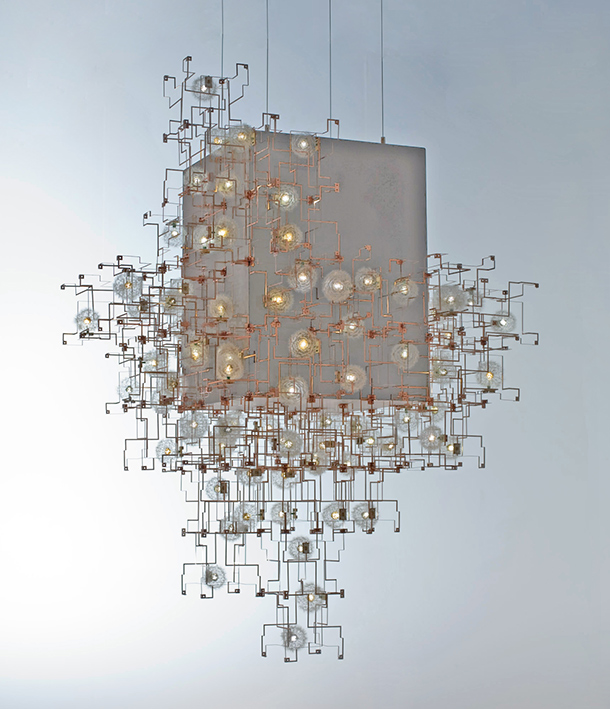
© Studio Drift, FF3 CC, Courtesy of Carpenters Workshop Gallery
© Studio Drift, FF3 CC, Courtesy of Carpenters Workshop Gallery
25 April – 27 September 2015
A V&A and Crafts Council Exhibition
What is Luxury? interrogated how luxury is made and understood. Luxury has a long history of controversy. More recently, the increase in prominence and growth of luxury brands against the backdrop of social inequality has raised new questions about what the term means to people today. Changes in culture and communication have also stimulated interest in less tangible forms of luxury, such as the desire for space and time.
What is Luxury? framed work by designers, makers and artists using a selection of terms in order to engage with and expand upon current debate. It addressed the production of exceptional objects, which demonstrate an extraordinary investment in time and handmaking. It explored how attitudes to luxury are shaped by cultural concerns and personal dreams. It challenged preconceived notions of value and provides an opportunity for thinking about the future of luxury in the 21st century.
Creating Luxury
Luxury production represents an investment in time. This applies not only to the time spent making an object but also to the process of perfecting skills. Makers of luxury are inspired by passion and curiosity for the intricate nature of objects, the potential of materials, and complex techniques. This motivation often exists beyond market demands and can require an acceptance of risk.
Making luxury is not concerned with practical solutions but with the extraordinary, non-essential and exclusive. Mastery of a craft and exceptional expertise are demonstrated by outstanding precision, attention to detail and remarkable finishes. Such quality is achieved by challenging and broadening established standards of craftsmanship and accepted categories of design. The resulting work combines high levels of innovation with a respect for craft traditions.
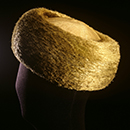
The Golden Fleece Headpiece
Giovanni Corvaja
2009
22 carat and 18 carat gold
Courtesy of Adrian Sassoon, LondonFascinated by the ancient Greek myth of the Golden Fleece, Giovanni Corvaja spent over ten years perfecting techniques of transforming gold into thread. 160 kilometres of superfine threads have been intricately woven together to form this headpiece. It took 2,500 hours to make.

Positive mould of Bone Chaise
Joris Laarman
2006
MDF, paint
Museum no. W.14-2012
Purchased by the Design Fund
© Victoria and Albert Museum, LondonThis object represents an early stage in the complex process of making the chaise in Joris Laarman’s Bone Furniture Series. The designs are based on a computer algorithm that simulates the way trees and bones grow. The algorithm dictates the form, allowing material only where structurally needed. This long-term project demonstrates how the luxuries of time, money and an acceptance of risk are required to make innovation possible.

Repair is Beautiful
Paulo Goldstein
2012
Steel, twine, rope, wood, canvas
Courtesy of Paulo GoldsteinPaulo Goldstein has elaborately repaired this broken folding chair, a mass-manufactured piece of everyday furniture. He has restored all of the chair’s functional properties, such as folding for storage, but the repairs now transform it into a highly crafted, unique object.

Chasuble
Venice
About 1670–95
Linen needle lace mounted on silk
Museum no. 743-1870
© Victoria and Albert Museum, LondonThis church vestment demonstrates the ability of skilled artisans with few tools – a parchment pattern, needle and scissors – to transform simple linen thread into a highly intricate textile. Venetian needle lace from this period was celebrated for its three dimensional sculptural quality, exceptional delicacy and elaborate scrolling floral patterns.

Funeral of a Swallow (detail)
Studio Ruuger
2015
Goat leather, brass
Leather produced in collaboration with Alran S.A.S.
Courtesy of Studio RuugerThe briefcase is an essential part of the businessman’s attire. Ruuger reconsiders classic designs with intricate decorative treatments. The inlaid decoration is inspired by Flemish flower garland paintings of the 16th and 17th centuries. One of two identical briefcases, it took over 300 hours to make, using traditional skills and new technologies.

Five Coloured Luster 0831
Chung Hae-Cho
Lacquer, hemp, ramie
Museum no. FE.98:1 to 5-2013
© Victoria and Albert Museum, London
Purchase funded by SamsungLacquer is usually applied to wood as a finishing technique but Chung Hae-Cho has developed a method of building an object primarily from lacquer. In a laborious and intuitive process, layers of raw lacquer paste and fabric are applied onto a mould, each layer individually cured and sanded, to provide thickness and strength. The outer layers are polished to provide lustre and depth of colour, which continues to develop over time.

Bubble Bath
Nora Fok
2001
Nylon
On loan from the Crafts Council: J283
Photo Heini SchneebeliNora Fok crafts unique pieces of jewellery that combine everyday materials and tools with time intensive techniques. For Bubble Bath, she delicately hand knitted nylon filament around toy marbles. The work plays on the opposition between material and subject, where durable synthetic thread has been used to capture bubbles, one of nature’s most fragile and ephemeral forms.

Howdah
India
About 1840
Silver, wood, mirror glass, velvet, cast iron
Musuem no. LOAN:GILBERT.1-2008
The Rosalinde and Arthur Gilbert Collection on loan to the
Victoria and Albert Museum, London
© Victoria and Albert Museum, LondonThis seat would have been used for riding elephants in ceremonial processions. It was part of a lavish attire which reinforced social status. Expensive materials and luxurious detailing provide the visual impact required to elicit awe. While the howdah suggests the pleasures of celebration, it was uncomfortable for both the elephant and passengers.

Luxury skimming stone with belt pouch
Dominic Wilcox
2009
24 carat gold leaf, leather, pebble
Courtesy of Dominic WilcoxSkimming stones on the surface of water is a simple and cherished pastime. By preselecting ‘ideal’ stones, covering them in gold leaf and keeping them in individually made pouches, Dominic Wilcox explores ideas of value and luxury associated with a humble pleasure. A found stone becomes exclusive, unique and precious but its ultimate purpose is to be thrown away in a special moment.

Crown
Portugal
About 1760
Gold, diamonds, emeralds, rubies
Museum no. LOAN:GILBERT.69:1 to 2-2008
The Rosalinde and Arthur Gilbert Collection on loan
to the Victoria and Albert Museum, London
© Victoria and Albert Museum, LondonThis crown was possibly the one given to the church of S. Lourenço in Azeitão near Lisbon by the Portuguese royal family. Made in the fashionable Rococo style, the gift was a flamboyant and generous gesture of power and taste as well as of piety. It was most likely intended for a statue of the Virgin Mary in her role as Queen of Heaven.

Jellyfish Installation
Steffen Dam
2010
Glass, silver foil, carbon layers
Museum no. C.92:1 to 7-2011
Purchased with the support of the Friends of the V&A
© Victoria and Albert Museum, LondonSteffen Dam is fascinated by the air bubbles, ash marks, soot residue, cracks and crookedness that appear in the glassmaking process. In his work he enhances the aesthetic and illusory qualities of these unexpected and unpredictable irregularities. Here he combines impurities with layers of carbon and silver foils to create hyper-realistic jellyfish forms within the solid glass ‘specimen jars’.
A Space for Time
Luxury has the potential to unlock dreams of being somewhere else or someone else. It exists at the boundaries of daily routines and systems but relies on notions of breaking out.
The acquisition of luxury objects has always fulfilled aspirations. In a busy and intrusive world, people increasingly value time and space for enjoying special moments and extraordinary experiences. Contemporary designers engage with how the availability of time and space, and quality of time spent, can be seen as luxuries in their own right.

Time For Yourself
Marcin Rusak, concept in collaboration with Iona Inglesby
2013
Felt, iron-ore, silver, steel, leather, glass, graphite, cotton,
oils, salt
Courtesy of Marcin Rusak'It is almost impossible to get truly lost these days. It would take a lot of effort to experience this luxury'. — Marcin Rusak
As contemporary life becomes ever more occupied, time and space to think for oneself are increasingly valued. Rusak presents a set of tools for experiencing life outside daily routines, discovered by chance. These include a dial-less watch that heats up with the sun, a compass for discovering random places and a blanket to keep warm on the journey.
A Rematerialisation of Systems, Body I and Body II
El Ultimo Grito
2014
Borosilicate glass, lycra
Courtesy of El Ultimo GritoAny decision about luxury is motivated by the impulse for something new and better but usually requires a trade-off between competing desires and available options. This project serves as a metaphor for real world systems and interactions. Transparent glass ‘bodies’ give the impression of a visible, intelligible network of spaces designed for specific functions. However, the transparency is in part an illusion, as connections within systems are complex, overlap and have dead ends. This work questions the limits to our freedoms and capacity to choose alternatives.
A Future for Luxury
Designers and artists speculate about the future not with the aim to predict but rather to reflect on current conditions and possible alternatives. The projects in this section rethink what luxury means today and how it might be defined in the future.
These speculations address the fundamental relationship between luxury and value. Rather than being constant and predictable, perceptions of value vary. They are driven by market forces, rooted in cultural conventions and subject to legislation and corruption. The fictional scenarios presented here subvert notions of value, introducing artificial, common, overlooked, distant and even condemned materials and their contexts. By doing this they challenge the relationship between luxury and materials which are commonly understood to be precious and rare.

The Rise of the Plasticsmith
Gangjian Cui
2014
Plastic
Courtesy of Gangjian CuiThe Rise of the Plasticsmith imagines a situation in 2052 in which plastic has become a rare and precious material. Daqing in Northern China is a major centre of plastic production, founded as an oilfield in the late 1950s. Gangjian Cui combines objects with film to tell a fictional story about its post-industrial future. Due to the depletion of global petroleum reserves, plastic can no longer be mass-produced but is instead carefully hand-crafted into luxury objects by skilled makers.

Gold Object Player
A Comprehensive Atlas of Gold Fictions
Aram Mooradian
2011
© Aram MooradianGold is a powerful symbol of status and a cornerstone of the global economy. Aram Mooradian investigates the impact of the gold mining industry on the landscape, language and collective memory of Australian Aboriginal communities. He maps the infrastructure of the gold economy, tracing its movement across the globe through vaults, laboratories and workshops. Drawing on the capacity of gold to store information, as used in electronics, Mooradian imagines a future where gold is valued as an enduring repository for memories, dreams and desires.

Tendered Currency
Roadkill Diamond, Gunpowder Diamond, Superman Diamond
Shane Mecklenburger
2012
Manufactured diamonds, glass, paper, metal and armadillo ashes
Courtesy of Shane MecklenburgerDiamonds result from the synthesis of carbon, pressure, high temperatures and time. Conditions that occur too deep within the Earth’s core to be witnessed can be replicated in a laboratory over the course of a few months. While manufactured diamonds have the same visual appearance and material properties as natural ones, they do not hold the same symbolic or financial value. Shane Mecklenburger has made and personally authenticated a series of diamonds from culturally-charged sources of carbon as a commentary on the relationship between value and authenticity.

DNA Vending Machine
Gabriel Barcia-Colombo
2014
Plastic, glass, DNA extracted from human saliva
Courtesy of Gabriel Barcia-ColomboThis art installation explores our increasing loss of control over biological data and privacy. It proposes a dystopian future of genetic engineering where DNA samples, each packaged with a picture of the donor, can be offered in a vending machine. It not only addresses current concerns about sharing, accessing and trading personal data, but also speculates on future desires to have access to other people’s health and aspects of their identity.

Hair Highway
Studio Swine
2014
Human hair, resin, stainless steel, mirror
Courtesy of Pearl Lam DesignHair Highway speculates about future sustainable materials. As the human population continues to grow and the world’s natural resources diminish, human hair could become an increasingly viable alternative. The objects on display are made from a combination of hair and bio-resin, creating surfaces which evoke rare and endangered materials such as horn and tropical hard woods. The project resulted from research into the Chinese hair trade and alludes to the ancient Silk Road, a trade route for goods and cultural values.

The Boltham Legacy
Henrik Nieratschker
2014
Courtesy of Henrik NieratschkerThis project tells the fictional story of British multi billionaire Lloyd Frederic Boltham. He secretly runs a private space program to create a future monopoly on the mining of exoplanets (planets that orbit stars beyond our solar system). Using recent breakthroughs in synthetic biology he hopes to identify existing metals and leaves this research as a legacy to his family. This project questions the exclusivity of access to the potential riches of outer space and addresses the moral and ethical implications of exploiting Earth’s resources.

Rare Earthenware
Unknown Fields Division with ceramicist Kevin Callaghan
2014–5
Black stoneware and radioactive mine tailings
© Toby SmithWhile journeys to extraordinary places are the cornerstone of luxury travel, this project follows more well-concealed journeys taking place across global supply chains. It retraces rare earth elements, which are widely used in high end electronics and green technologies, to their origins. Unknown Fields Division have used mud from a barely-liquid radioactive lake in Inner Mongolia, where the refining process takes place, to craft a set of three ceramic vessels. Each is sized in relation to the amount of waste created in the production of three items of technology – a smartphone, a featherweight laptop and the cell of a smart car battery.

FOMO
Space Caviar
2014–ongoing
FOMObile (steel, MDF, wheels, printer, computer, LCD monitors),
online classified advertisements, custom FOMO software
Adapted for this installation on commission by the V&A
Courtesy of Space CaviarFOMO is a real-time publishing platform initiated as a response to the paranoia of human replacement by machines. It tests the capacity for editorial processes to be automated and reduces human interaction to entering a postcode. The printed result is labelled an artist book. By producing single copies only, FOMO demonstrates how supply and exclusive access can be manipulated in order to increase desirability. This comments on the art market’s conflation of art with lucrative investment. Here, the acquisition of the artist book is ultimately a matter of patience and luck.
What is Your Luxury?
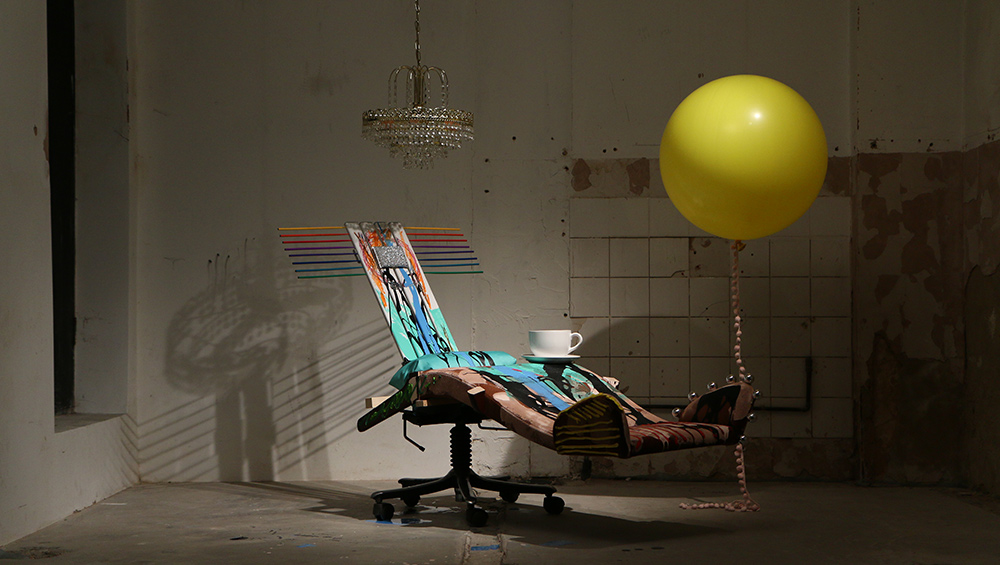
The Last Man’s Seat
By The Last Man
2015
Commissioned by the V&A
Private Collection
The Last Man’s Seat, by The Last Man, 2015, commissioned by the V&A Private Collection
The question of luxury is ultimately a personal one. Everyone decides for themselves what their luxury could be. Enjoying or affording luxury is not only a question of budget but of individual circumstances and preferences.
Freedom to dream and the ability to take decisions are fundamental to enjoying luxury. These principles of freedom and choice are central to the thesis of an ongoing project, The Last Man. It imagines a situation in which an individual finds himself alone in the world but with all of its resources intact. Free from obligation, economics, politics, fashion, society and the constraints of time, the last man gamely begins to design and build his own material world, reflecting his dreams and desires.
Sponsored by
Northacre, the noble force in landmark residential development, has been at the forefront of the revival and development of buildings of historical significance and stature for over 25 years. Northacre’s reputation is built on its intrinsic understanding of luxury combined with a passionate attention to detail and working with the finest craftsmen, values that chime with the content of What is Luxury?
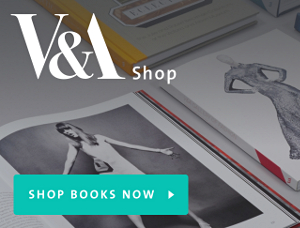
Become a V&A Member
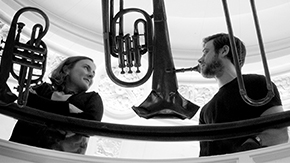
V&A Members enjoy a wealth of benefits, including free entry to exhibitions, previews, exciting events and the V&A Members’ Room. In addition, you will be supporting the vital work of the V&A.
Buy or Renew Membership Online